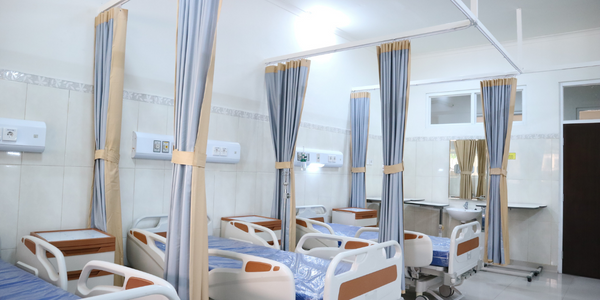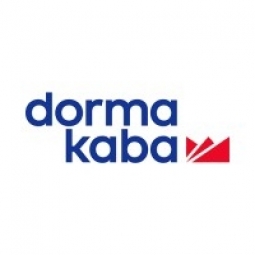Customer Company Size
Large Corporate
Region
- America
Country
- United States
Product
- Saflok’s online Messenger system
- Windows-based System 6000
- MT lock
Tech Stack
- Wireless Access System
- Windows-based System
Implementation Scale
- Enterprise-wide Deployment
Impact Metrics
- Cost Savings
- Customer Satisfaction
Technology Category
- Application Infrastructure & Middleware - API Integration & Management
Applicable Functions
- Facility Management
Use Cases
- Building Automation & Control
- Energy Management System
Services
- System Integration
About The Customer
The Detroit Marriott is a luxury hotel located in Detroit, United States. It is the tallest all-hotel skyscraper in the western hemisphere, boasting 73 stories. The hotel offers 1,300 rooms and suites, as well as well-equipped meeting rooms for business travelers and conference participants. The hotel is part of the Marriott International, Inc., a leading global lodging company with more than 6,700 properties across 130 countries and territories. The Detroit Marriott is located in the Renaissance Center, a group of seven interconnected skyscrapers in Downtown Detroit, Michigan. The complex is owned by General Motors as its world headquarters.
The Challenge
The Detroit Marriott, a 73-story luxury hotel with 1,300 rooms and suites, required an upgrade to its electronic access system from 1992 to meet the demanding security requirements of a luxury hotel in an international metropolis. The management was looking for the newest version of electronic locks with automatic deadbolt that provided a high level of security and were easy to use for guests and staff. The system needed to include central retrieval of access rights and lock data, multiple-keying plans, and all the Windows-based system applications. The hotel also wanted to optimize its energy use on a lasting basis by controlling the temperature in the individual rooms on a centralized basis.
The Solution
Saflok proposed its online Messenger system, which provided features and functions that went beyond the conventional electronic lock systems. The system allowed all lock data from staff keys to be retrieved centrally, and data could be sent to the locks via staff smart keys, making time-consuming manual checks unnecessary. Access rights to all doors in the hotel were remotely controlled and could be changed very easily. The system also interfaced with a third-party energy management company to control the temperature in the individual rooms on a centralized basis. The upgrade to the new Windows-based System 6000 began in 2005, and the following year, Saflok switched the existing locks to the MT lock.
Operational Impact
Quantitative Benefit

Case Study missing?
Start adding your own!
Register with your work email and create a new case study profile for your business.
Related Case Studies.

Case Study
Turning A Stadium Into A Smart Building
Honeywell created what it called the “intelligent system” for the National Stadium in Beijing, China, turning the venue for the opening and closing events at the 2008 Summer Olympics into a “smart building.” Designed by highly controversial artist Ai Weiwei, the “Bird’s Nest” remains one of the most impressive feats of stadium architecture in the world. The 250,000 square meter structure housed more than 100,000 athletes and spectators at a time. To accommodate such capacity, China turned to Honeywell’s EBI Integrated Building Management System to create an integrated “intelligent system” for improved building security, safety and energy efficiency.

Case Study
BACnet enabled Wireless Temperature Monitoring System
Client offered a Temperature Monitoring System which consists of Wireless Transmitters and Application Software. Third party BACnet Application such as a Building Automation System needs access to vital parameter such as temperature, humidity, CO2, etc., measured by wireless sensor devices. Client needed a solution to allow data exchange from its Temperature Monitoring System with BMS.

Case Study
Medanta the Medicity
Medanta is one of India's largest multi-super specialty institutes located in Gurgaon, India. Some of the key challenges facing Medanta included: - No Monitoring & Control over Energy Use, Indoor Air Quality, Indoor Lighting Quality & Noise Levels. - No compliance monitoring of temperature & pressure in critical care wards. - Energy bills were a surprise with no way to forecast energy costs. - Missing data & insights that could be used for targeting areas of improvement. - Existing Billing Management System (BMS) was inflexible and could not be used across the enterprise to serve the needs of different users. Requirements Based on these challenges, Medanta was looking for a comprehensive solution to Monitor & Control: - Energy Usage - Power Generators - Clean Rooms - HVAC Temperature - Chiller Temperature - Hydrant Pressure - Air Quality & Noise Levels - Critical Wards

Case Study
Driving Network Efficiency and Fraud Detection Efforts
Baltimore Gas and Electric Company (BGE) wanted to optimize the deployment and ongoing health of its advanced metering infrastructure (AMI) network and identify and reduce unbilled energy usage. BGE wanted a solution to deliver an annual economic benefit of $20 million.

Case Study
Sirqul and Catalyst Workplace Activation Reveal the Future of Smart Offices
This partnership will disrupt the “traditional” office furniture conversation by examining the intersection of people, place, and technology. We realize it is increasingly evident that the design of spaces is an enabler to meaningful interactions between people and fosters a sense of community and culture by taking on the challenges of designing for a more productive, collaborative, and inspiring workplace, leveraging technology to process data on how people work, communicate and engage with one another.








